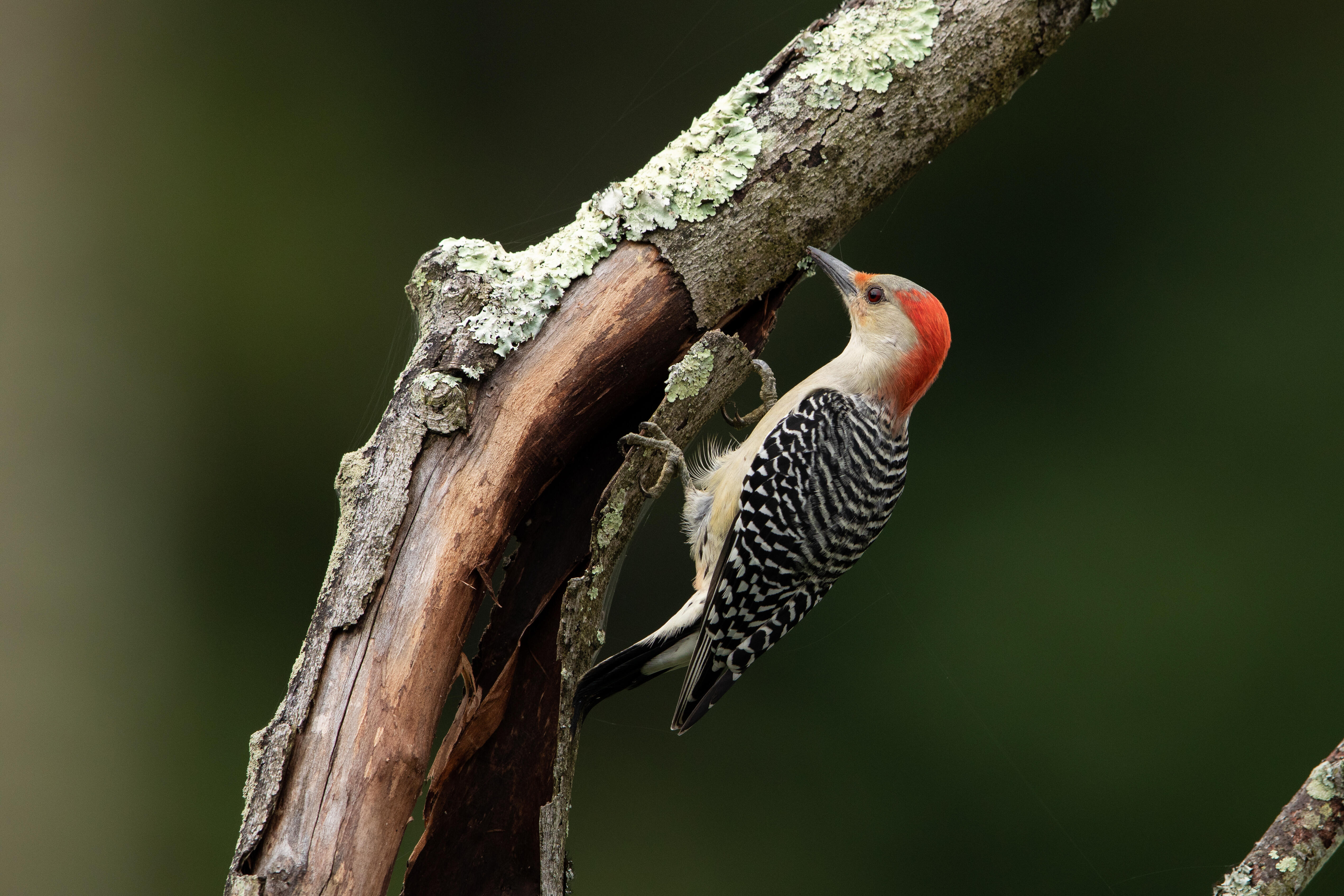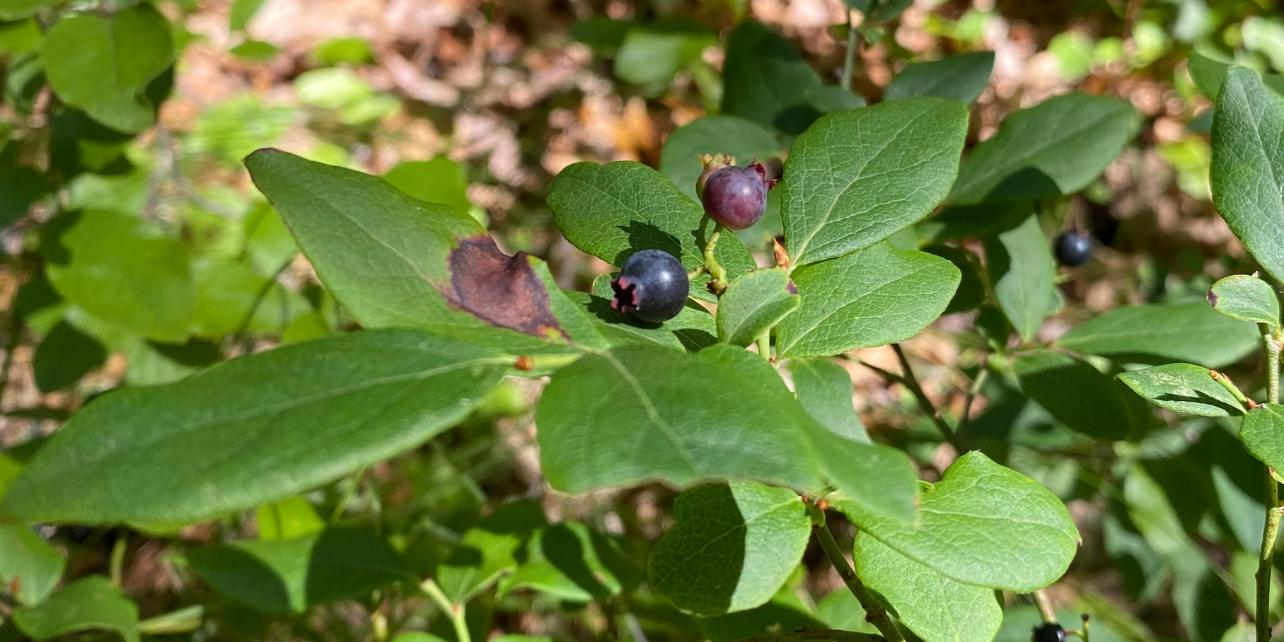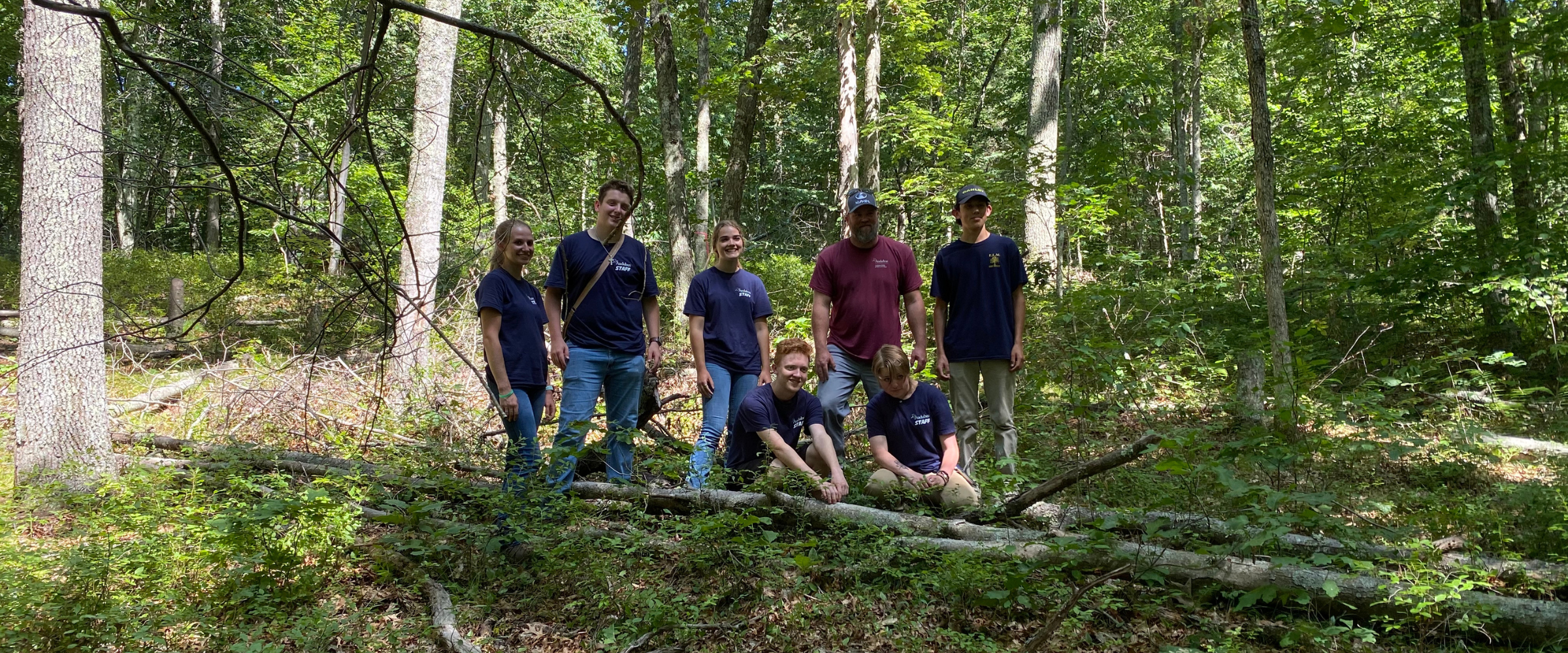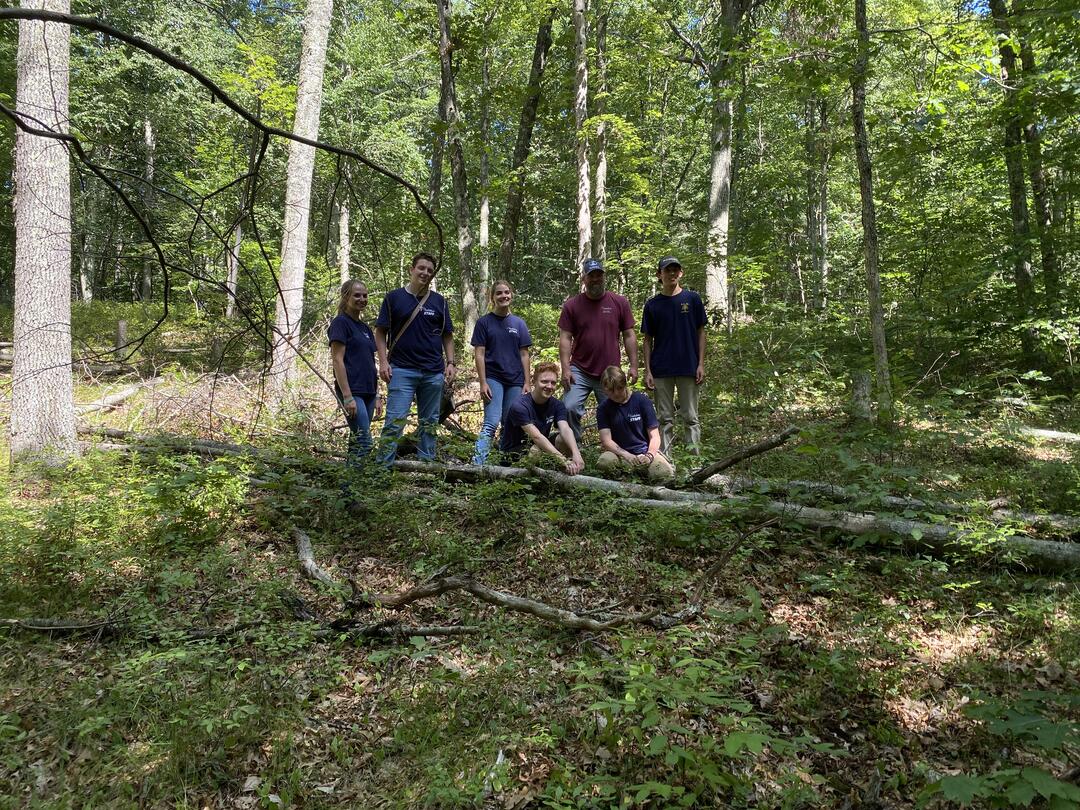For a Junior Forest Technician, a mid-morning snack might look like a handful of freshly picked wineberries. As we worked through the grounds of the Bent of the River Audubon Center, we paused here and there to pull the brightly colored berries from the brambles that wove through the underbrush.
“Technically, this is invasive removal,” remarked one Junior Forest Technician with a laugh. Wineberry (Rubus phoenicolasius) is an invasive shrub known for forming thickets that drastically decrease forest usability for wildlife and recreationists alike. Eating the delicious berries means their seeds cannot spread, which, as far as we were all concerned, was a valuable act of forestry.
Of course, forestry is a lot more than just enjoying a tasty berry breakfast.
“To me, forestry and forest management means impacting nature and the surrounding wildlife for the better,” explained Lily Mills, Junior Forest Technician. She’s been working with the Bent since 2020, going from frequent visitor to volunteer to, in recent years, a Junior Forest Technician (JFT).

Junior Forest Technicians are high school students that the Bent of the River Audubon Center employs to help manage the Center’s woodlands, as well as nearby plots. Through this, they get hands-on lessons and experience in forestry.
“In my natural resources class, I've been ahead of the game in almost every topic we cover due to learning about the different careers and forestry techniques in the program,” said Joe Velky, another Junior Forest Technician. Like the other JFTs, he attends the local agricultural school that partners with the Bent to run the program.
Each working day, the JFTs complete a variety of tasks, from forest assessment to invasive removals and more. The tasks for this specific Wednesday included surveying on a site that had been hit by a tornado in 2018 and checking in on the progress of a site they had started managing the previous summer.
A bumpy gator ride took us to the first site, where snags—essentially logs that have yet to fall over—reached towards an open sky, surrounded by more intact woodlands. Pausing to identify birdsong, the JFTs were able to discern the calls of Blue Jays, Red-bellied Woodpeckers, Tufted Titmice, and Black-capped Chickadees.

According to Eric Hansen, an experienced forester that joined us for the day to assist JFT program manager Glen Somogie in training the students, this was a good way to begin their analysis. The question of “what birds are you hearing?” led to “what aspects of this area support them?” and “how can this space better support wildlife?”—all important frames by which to assess a forest plot.
From birds to bugs to berries, all the different parts of a forest tell a story. Part of the JFT’s job is to figure that story out, and decide where to take it next.
At the second site we visited, they had already contributed to this story. They had assessed the plot the year before and determined it could be improved by planting native blueberries, huckleberries, and serviceberries, along with removing trees that blocked the light that they need to grow. Thanks to the JFT's management, nearly all the plants had fruited in the year since they’d been planted, providing food for the forest’s residents.
“I’ve learned by being a JFT that some small efforts we make can have a large impact on the health and success of a forest. Seeing how much of a difference we make when clearing invasive plants or planting native ones is so interesting,” said Junior Forest Technician, Danni Syrotiak. She took part in last year’s planting, and, like everyone present, was ecstatic to see how their work had made the forest a more valuable space for wildlife.

Experiences like these are what makes the Junior Forest Technicians program stand out. Getting a real sense of what it takes to be a forester gives its students the advantage of understanding this work as they take their first steps towards a career that may last them a lifetime.
“This program has taught me many things regarding forestry and surrounding areas of work. I plan to go to school to study the area of conservation, conservation law, and environmental sciences,” said Joe Velky—and he’s not the only one! Several JFT alums have gone ahead to pursue degrees and careers in this field, including through jobs with the Connecticut Department of Energy and Environmental Protection.
Career goals aside, many receive something just as important through the program: a feeling that they have the ability to change the world for the better.
“From invasive plant removal to song bird banding, I know that I am making a difference,” said Junior Forest Technician Lily Mills, “[…] that is the most fulfilling feeling that I need to be able to continue my path as an aspiring forester.”









